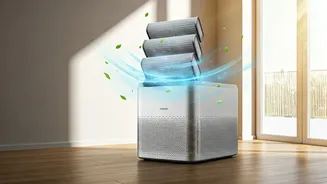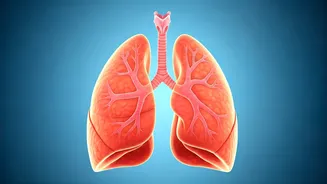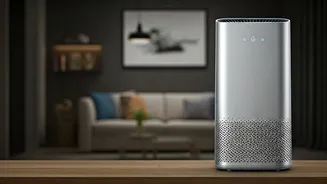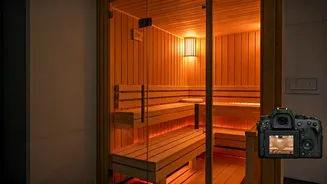Pollution's Growing Threat
As pollution levels climb, the need for effective air purification systems becomes more pronounced. Understanding the specific pollutants in your environment
is the first step toward finding the perfect air purifier. Fine particulate matter (PM2.5), which can penetrate deep into the lungs, is a major concern. Other common pollutants include dust, pollen, pet dander, volatile organic compounds (VOCs), and various gases. Factors such as location, surrounding environmental conditions, and the season can also influence the type and severity of pollutants. The right air purifier can significantly reduce these pollutants, leading to improved indoor air quality and overall health, especially for people with respiratory issues.
Filter Type Matters
The type of filter is a critical factor in determining an air purifier's effectiveness. High-Efficiency Particulate Air (HEPA) filters are particularly efficient at capturing particles like dust, pollen, and pet dander. These filters are capable of removing 99.97% of airborne particles that are 0.3 microns in diameter. Activated carbon filters are another important element as they are designed to remove odors, gases, and VOCs, which are often found in cleaning products and furniture. Pre-filters are the first line of defense, capturing larger particles and extending the lifespan of the more specialized filters. When choosing an air purifier, it is important to consider the combination of filters and how they work together to eliminate various pollutants effectively.
Air Change Rate (ACH)
The Air Change Rate (ACH) indicates how often the air purifier can completely replace the air in a room. A higher ACH means the air purifier cycles the air through its filters more frequently, therefore cleaning the air more effectively. The ACH value must be matched with the room's size to ensure optimal performance. In general, larger rooms require air purifiers with higher ACH ratings. For example, a living room with higher levels of activity may need an air purifier with a higher ACH than a bedroom. Understanding the room's dimensions and the air purifier’s ACH rating allows you to determine if the device is suitably equipped to maintain air quality and minimize pollutants in a space.
Additional Features to Consider
Beyond filter types and ACH, other features enhance the usability and effectiveness of an air purifier. Some devices have built-in sensors that monitor air quality and adjust the fan speed automatically. A quiet operation is critical for bedrooms or other spaces. Consider the noise levels in decibels when selecting a product. A filter replacement indicator is a handy feature, alerting users when it's time to replace the filters, ensuring consistent performance. Smart features, such as Wi-Fi connectivity and app control, provide convenience by allowing users to manage their air purifier remotely. The availability of replacement filters and their cost are also important long-term considerations when purchasing an air purifier.
Placement and Maintenance
Proper placement of an air purifier is essential for optimal performance. Place the air purifier in a central location, away from walls and obstructions, to ensure proper airflow. It is crucial to change filters regularly, based on the manufacturer’s recommendations, to maintain effectiveness. The lifespan of filters varies depending on the type and usage. Regularly cleaning the pre-filters helps prolong the life of the other filters. Follow the manufacturer's instructions for cleaning the outer surfaces of the air purifier. When used properly and maintained, an air purifier helps significantly improve indoor air quality and, in turn, contributes to a healthier living environment.















